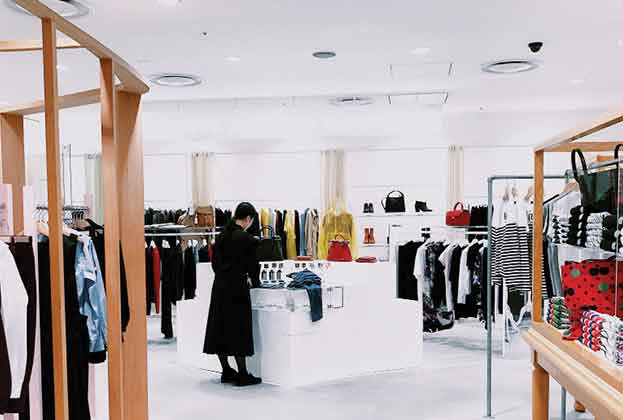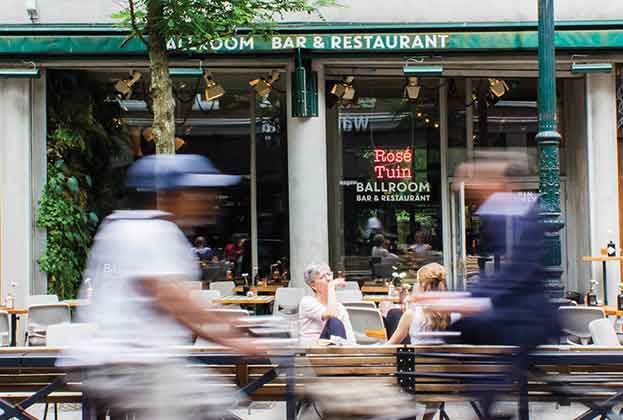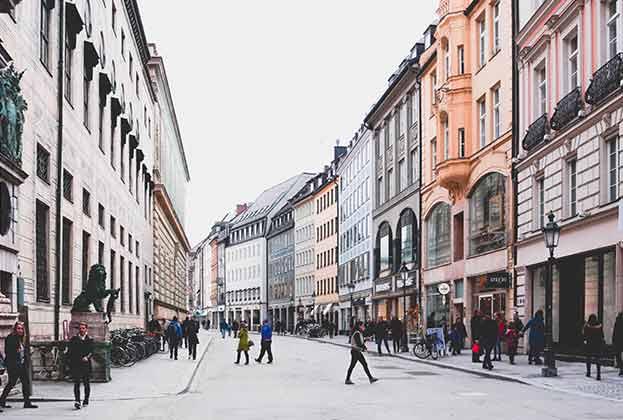The way we want to spend our time and money is having a fundamental impact on the nature of ‘retail’ destinations
The emergence of e-commerce and structural shifts in terms of how we, as consumers, want to spend our time and our money are shaping the nature of retail destinations, be they shopping centres, high streets and retail parks.
The growth in online retailing is having the most significant and immediate impact on retailers space requirements. European online sales are forecast to expand by an average of 11.5% per annum through to 2023 with physical sales expanding by 2.0%. The UK will continue to lead with an online penetration rate of 25% by 2023 with the Netherlands and Germany coming in second (18%) and third respectively (16%).
While this growth will pose a challenge to physical retailing it is important to note that a significant share of this online spend will touch a store. GlobalData suggest that in the UK approximately 29% of online sales touch a store either through click & collect (15%) and where a customer has browsed the product in store first (14%). Considering that click & collect sales are forecast to increase 38% by 2024, accounting for 16% of online sales, the store will continue to play a key role.
It’s all about experience
But, it is not just how we shop but also how we want to spend our money and our time that is also shaping retail destinations.
Over the last five years experience related consumer spend, such as eating out and staying in hotels, has outstripped the growth in total consumer spending. It has also outperformed traditional retail sectors such as fashion. This is even more pronounced for western Europe’s most affluent core cities, that is those with a regional and international pull such as Paris, London and Munich. For example, eating out spend across the top 15 affluent core cities has grown by 2.3% per annum in real terms, 39bps (basis points) higher than fashion spend. In certain cities this trend is amplified. Munich consumer spend on fashion has grown 0.3% per annum since 2013 whereas recreation spend has expanded 2.6% with forecasts to 2024 suggesting hotel spend will expand 4.0% per annum.
This shift in spend towards experiences can be seen across all age groups, but has been largely driven by millennials (those currently aged under 38) and baby boomers (aged 55-73 years).
For baby boomers this partly reflects increased leisure time due to retirement but also the fact they are more affluent than previous older generations. For millennials and their younger counterparts, Generation Z (aged under 22 years), it is about shifting priorities which are centred on experiences rather than owning ‘stuff’. For example, a recent survey found that 78% of millennial respondents said they would rather spend their money on experiences.
But, it is not just this preference for experiences that makes them unique. Millennials are the first digitally native generation, they tend to be more demanding, are less affluent than previous generations and are more health conscious as well as more environmentally and socially aware. All of which are influencing consumer behaviour and will continue to do so considering that global millennial spending power will overtake that of their older counterparts, Generation X, in 2020. Yet with baby boomers remaining the wealthiest generation until 2030, they will remain a key consumer group and one that should not be ignored.
Expanding cities
Urbanisation across Europe’s core cities, that is those cities with a regional and international pull, is forecast to accelerate. As a result occupier attention on urban locations will intensify.
Oxford Economics forecast that working age population of Europe’s top 15 affluent core cities will expand 2.4% over the next five years outperforming the 0.4% decline expected to be seen nationally.
The growth in urban populations is also evident in the decline in driving license registrations and in turn car ownership seen in these area, particularly amongst younger residents. For example, in the UK there has been a 20% drop over the last decade in the number of under-25s learning to drive.
The rising importance of tourist spend
While residents may be shifting their retail spend in response to changing preferences, the growth in tourist arrivals into Europe and its gateway cities could mean they become an ever more important driver of spend.
Europe is the largest tourist market in the world accounting for 51% of international arrivals in 2018, with seven of its cities in the top 25 most visited globally. With the UNWTO forecasting that arrivals will increase a further 7% by 2025, the ability of these visitors to shape spending in key destination cities is set to increase.
Chinese visitors in particular have been a very important consumer in Europe, most notably when it comes to luxury as 76% of their luxury spend takes place when they are travelling.
However, like their European counterparts Chinese visitor spend is also starting to evolve. The balance of luxury spend is forecast to shift towards domestic markets with Bain & Company forecasting that by 2025 50% of Chinese luxury spend will take place at home. At the same time Chinese tourists are increasingly valuing cultural experiences over shopping.
While this trend is likely to reduce average transaction spend, the greater number of Chinese tourists visiting European cities means total spend will continue to increase. But, like European consumers, an increasing amount of this spend will be experience based.
Luxury brands are already adapting to these changes. For example, LVMH acquired luxury hotel group Belmond in 2019 for a reported $3.2 billion with Prada acquiring a stake in Milan patisserie Marchesi 1824 opening its first site outside Italy, in London last year.
Read the articles within Spotlight: The Evolution of Retail Destinations below.
.jpg)


